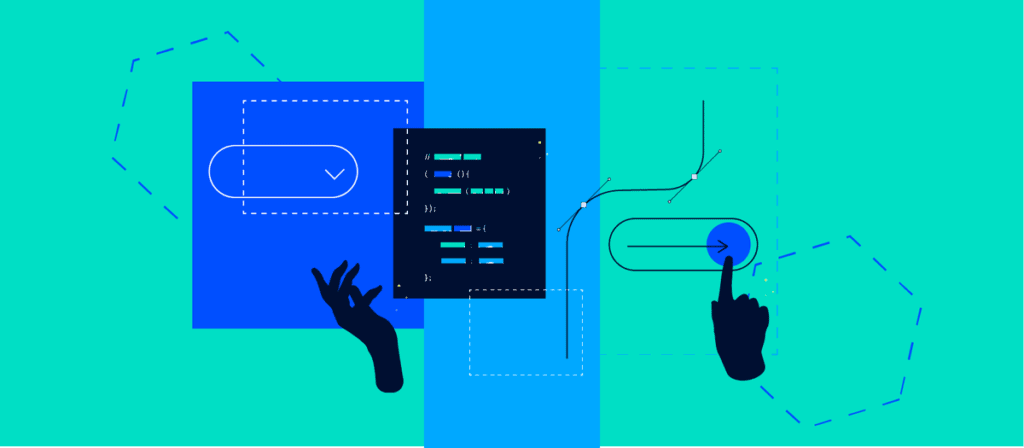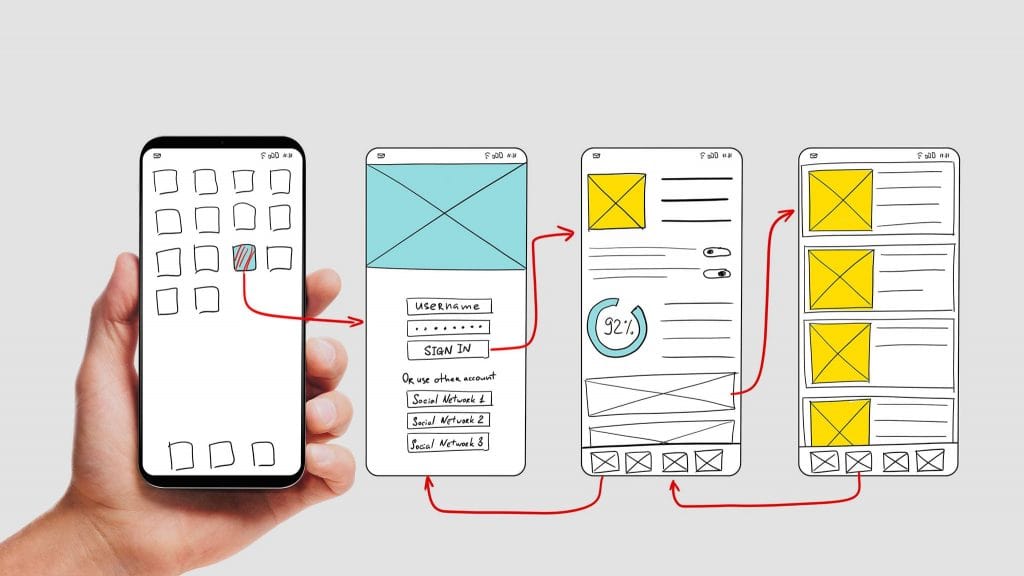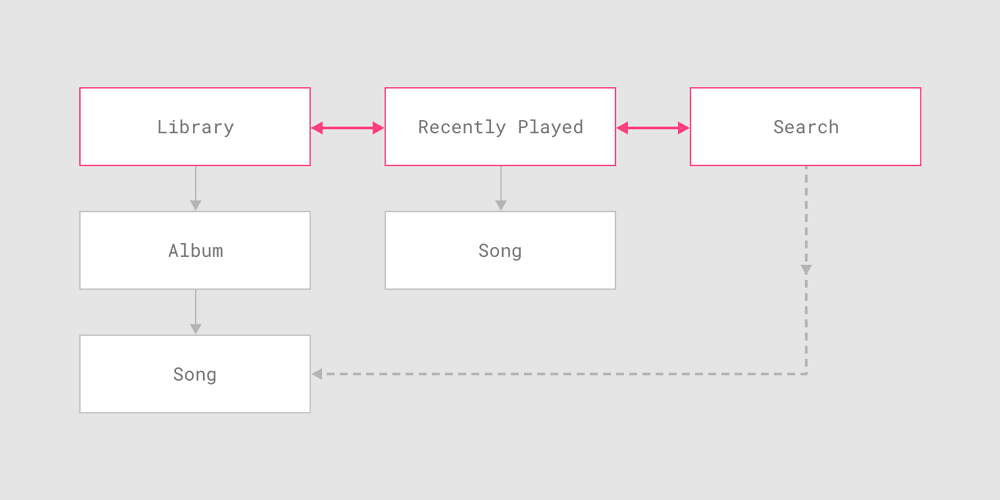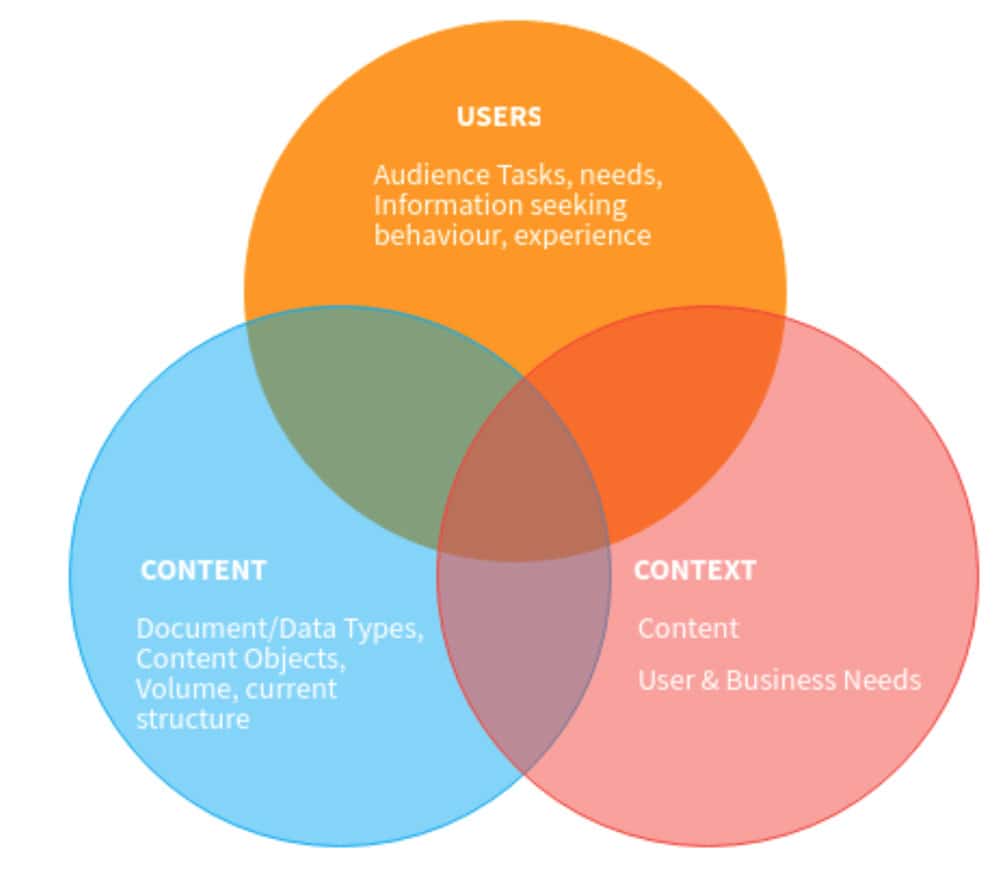User Experience Design: The Ultimate UX Guide
User experience design is creating a user-friendly and effective user interface. This means creating a site that is easy to navigate and use. User experience designers also pay attention to the small details and features that make the user experience unique and memorable.
This guide will teach you the essential skills to build user-friendly websites and applications. The first part focuses on understanding UX design principles and gives you the skills to create compelling designs for your projects. The second part focuses on designing with empathy and provides detailed guidance on applying user experience design to your projects.
You'll get real-world examples and practical exercises to gain firsthand experience in building great user interfaces. By this end, you'll be able to create a well-designed interface and understand what makes a good user experience.
UX is one of the hottest buzzwords in the tech industry right now. It's the practice of designing and building products and services that are useful, intuitive and delightful.
If you've heard of User Experience Design, chances are you've seen it in action: Apple's iconic interface, Google Maps, uploading to Spotify's design, and Facebook's mobile app.
This guide will show you how to apply User Experience Design principles to your projects. You'll see how UX can improve the user experience of your website or product, and you'll learn how to make sure it's a good one.
Table of Contents
What Is UX Design

User experience (UX) design is concerned with understanding end users' needs, goals, and behaviours and designing user-centred solutions that meet their needs.
UX design provides the foundation for the entire product development lifecycle, from creating a product concept to launching a successful product into the market. UX designers work closely with product managers, engineers, marketers, and other team members to create innovative products that solve customer problems and delight customers.
To build a product that meets the needs of consumers, UX designers must be aware of their target audience's needs, goals, and behaviours. Understanding what your audience values are the most important aspect of UX design. Once you know this information, you can create a user experience that resonates with your consumers.
This is why it's critical to understand user behaviour, how people interact with your product, and what they need from you.
What Is User Experience?
According to the Institute of Customer Service, a user experience is “the total sensory, emotional and cognitive response of a person to a product, service or brand.” In other words, a consumer's overall impression of the product or service after using it. The user experience is influenced by consumer interactions and decisions while interacting with your product.
For example, imagine shopping online for a mattress; your search results list two options. Option 1 is priced at $1099, and option two is priced at $899. You click on option two and proceed to the checkout process. You're asked to provide your shipping address when you finish the purchase. In this situation, there are three possible outcomes.
- You could say, “I'll be shipping to my home address.”
- Or, you could provide an address in the same city.
- Or, you could select the state and country that you live in.
All of these responses are valid, but the response most likely to lead to the best user experience is the last one: providing your state and country. This is because you'll probably live in that state and country for the rest of your life. It's where your family and friends are. It's where you're likely to visit often. And, it's where your job is. If you spend a lot of time there, you should know where to get the best experience.
As a UX designer, your goal is to ensure that the user experience is the best possible. This means being able to identify the needs of your target audience and design solutions that solve their problems.
Why Is Understanding User Behaviour Important For UX Design?

It's easy to think that your target audience is a faceless group. However, you are interacting with real human beings. They are coming to your site, app, social media page, physical location, or business, hoping they'll be happy with your product.
You need to take into account what these people want. By identifying these needs, you can design a product or service that will resonate with your customers.
What Is User Research?
User research is discovering what users want, what they like, what they don't like, and what frustrates them. User research includes the steps:
- Identifying and understanding the needs of your audience.
- Getting feedback from your target audience.
- Determining how to address these needs and what products or services to create.
User research is an essential component of UX design. It helps you understand what your customer's value, how they think, what they want, and what makes them unique.
The user research process begins with learning more about the people using your product or service. You begin by asking questions, such as:
- What are your needs and goals?
- What are your preferences?
- What are your habits?
- What are your interests?
- What are your thoughts and feelings?
Once you've answered these questions, you begin researching and testing your assumptions. This is known as hypothesis testing. The most common way to do this is through surveys or interviews with potential users. You can also conduct usability studies and A/B tests.
A/B Testing
A/B testing compares two versions of a website or app to determine which performs better. In other words, A/B testing helps you determine whether one version of a product or service is more effective than the other.
This process typically begins with one version of the product's testing version second a slightly different version. To determine which one performed better, you collect data on which version was more effective.
You can use A/B testing for a variety of purposes, including:
- Testing the impact of a new design
- Creating a new user interface that is easy to navigate
- Ensuring that a new product or service is performing as expected
- Evaluating how well one marketing strategy works compared to another
How Does UX Design Work?
User experience design is how you design and build your online experience for your customers and users. As a user experience designer, it's your job to help customers understand your brand and your product and to find ways to make them love using your product.
User experience design requires deep empathy, an understanding of human behaviour, and an awareness of design patterns, trends, and cultural nuances. A well-designed website will help your customers find the information they want faster and with less effort. But for websites to be successful, they must be built with the proper focus on customer experience.
In this section, you'll learn how user experience design differs from product development and how to create a great user experience. You'll also see user experience and product design examples that are done well and poorly.
How Does User Experience Design Work?
When a business or non-profit decides to launch a new website, they usually start with a product idea. However, most companies know that a well-designed product won't mean much to their target audience.
When someone walks into a restaurant, they want to feel comfortable and relaxed, so the interior decor of the space needs to match the mood of the establishment. In the same way, a restaurant needs to be designed to inspire guests to eat and enjoy the food.
A well-designed website has a similar purpose — it should inspire customers to purchase and use your products. For example, when you visit a website, you're looking for answers to questions like:
- Who are you?
- What can I do?
- What else is there to learn?
- How do I get started?
- What's your mission?
- Is it worth my time?
Asking these questions can reveal the type of personality and vision that your company represents. This makes it easy to determine whether a website reflects your organisation's values, culture, and goals.
But it's only the beginning of the process. If you want to create a positive experience for your users, you'll need to pay attention to every aspect of your site, from the colour of the text and the overall layout to the copy of your page content.
While the core features of a site are evident to anyone who visits, the design decisions that influence user experience are often hidden in the details. User experience designers are responsible for your site's feelings and must consider everything from typography to navigation.
The goal of user experience design is to maximise the user's experience on your site. That means a well-designed user interface can make the visitor more productive, happier, and better informed. But it also means that a bad user interface can slow the customer down, discourage them from buying, or make them leave your site without taking action.
So, what does it mean to build an experience?
The user experience (UX) team at a company or non-profit sets the overall vision for the site. Their role includes:
- Researching the people who will be visiting the site
- Identifying and analysing user personas
- Developing the user experience strategy
- Creating wireframes and prototypes
- Creating a detailed design document
This UX team typically includes a creative director or project manager, a research manager, a usability engineer, and a user experience designer. Each team member brings a different skill set and perspective, which helps the entire team collaborate and build a great user experience.
What are the Differences Between User Experience Design and Product Development?
User experience design is a discipline that takes many forms, including usability testing, user interviews, and user flows. It differs from other forms of product design because it's meant to improve the user's overall experience with your site. It's the “how” of the user's experience.
Product development is the “what.” A product designer focuses on the technology, aesthetics, and functionality of a website or app, while a user experience designer is focused on the user. As you can imagine, the two disciplines are often intertwined but have unique purposes.
A product designer is responsible for building the website's framework and visual elements. The role of the user experience designer is to ensure that the product is usable and enjoyable for customers. They may work closely with the product designer to ensure that the look and feel of the site meet their needs.
The UX team may also be involved with the following activities:
- Conducting market research
- Analysing data from social media
- Conducting usability testing
- Testing different navigation models
- Developing user flows
When you think about a product, you probably envision a physical object — a tangible thing that you can hold in your hand. The user experience of that product is the “how” of using the product. The product developer creates a product that is easy to use and intuitive.
User Experience Design Principles
As our industry evolves, we must stay abreast of the latest trends. User experience design (UX) is no exception.
There are five core principles of UX, including simplicity, discoverability, navigation, engagement, and information architecture. Let's take a closer look at each.
Simplicity

We've all experienced websites and applications that are complicated and hard to navigate, and that's something we want to avoid. Simplicity is essential, and when it comes to UX design, it means finding ways to make things easy for users.
For example, instead of using a search bar to find a user's account, Google creates a button that lets them search their account. This is simpler and more efficient, yet it works well with the design. Users don't have to figure out how to use the search bar; they tap the button.
Similarly, in our application, we don't want to ask users to perform two or three clicks to find a task; instead, we want to streamline the process. So, in the case of tasks, we link users to the next step.
When it comes to your website, it's essential to keep the design simple. Your users don't want to spend too much time searching and clicking. Research shows that visitors would rather wait a few seconds for something than go through a tedious process.
This applies to your content as well. Simplicity means keeping things short and sweet. If your copy is longer than one sentence, the reader is more likely to move on.
On the other hand, if your copy is exceptionally brief, it might lack the depth to provide the user with helpful information. It's all about balancing the amount of content and simplicity.
Discoverability
It's a given that our users want to get to know us. They want to know what we offer and where they can find it. Discoverability means providing information in the easiest way possible, so users can find it without going through many steps.
For example, let's say a user is looking for a job in the Boston area. After reading the job listings, the user clicks on “Apply Now.” They are then directed to a page that lists a few other jobs, some of which they are interested in.
Instead of forcing the user to scroll down the page and click on each job individually, they are provided with a summary of each listing that allows them to click on the ones they'd like to apply for.
Navigation

You'll notice that most of our examples have been about simplifying the process of discovery. However, navigation is another critical component of UX. It's all about helping your users navigate your site and app.
Regarding navigation, we have two options: menu bars and toolbars. The first option is what you're familiar with—the “home” button or hamburger icon. But you may be surprised by the second option: the toolbar.
Toolbars, which consist of only a handful of buttons, are easier to manage than a more extensive navigation bar. For example, in a task management application, your users may only be working on a handful of tasks simultaneously.
With a toolbar, you can quickly access the needed features without having to scroll down the page or across the screen. Toolbars also improve the way your site and app look. They add a little space to your page and make it less cluttered, improving the overall experience.
Engagement
In the same way, that simplicity is about making things easy; engagement is about giving users what they want. It would be best if you keep your users engaged in making sure they stick around.
For example, let's say that a user completes a task on your website. They complete a form that tells you their preferences, and then you send an email to their inbox. If they open the email, the content may be interesting to them, but it could also be mundane or irrelevant.
They might even think they're receiving spam, which means your content wasn't engaging enough. Instead, you can make your email more interesting by personalising it. Adding a photo of yourself or changing the font can make the email more relatable.
The same goes for social media. For example, Facebook does a great job of personalising its updates based on its followers' preferences.
Information Architecture

Information architecture is vital to your UX. You need to plan out your content so that it is easy for users to find what they are looking for.
As we discussed, simplicity means keeping things short and sweet. On the other hand, discovery means finding the most relevant information at the top of your page.
We also need to make sure that our pages are easy to scan. So, we create long-form articles and paragraphs that are broken up into headings, subheadings, and bullets.
An excellent way to improve your information architecture is by creating an information hierarchy.
Best Practices for UX Designers
If you're designing websites or applications, you must know the accessibility guidelines for people with disabilities. According to the Web Content Accessibility Guidelines (WCAG), you should also design for people of colour and the LGBTQ community. It's important to understand these groups because they make up a large portion of the population, but they may not receive access to technology and resources.
If you're designing a digital product for the blind, read the guidelines below to ensure it's accessible and accessible.
What Are WCAG Guidelines for Accessibility?

The Web Content Accessibility Guidelines have four main goals, or WCAG 2.0. These goals include making sure that:
- Users can locate information and navigate content
- Content is available through the text and other media
- All users can understand the content
- Web pages can be read or used by anyone regardless of ability
These goals are divided into three success criteria. The first two focus on ensuring content is visible and available to everyone, while the last one ensures users can understand it.
Success Criterion 1: Perceivable
The first success criterion is “perceivable” and examines whether people with disabilities can identify content through various means.
For example, you can make sure text is big enough that users with visual impairments can see it, or you can make sure colour contrast is sufficient.
Success Criterion 2: Operable
The second success criterion is “operable” and is concerned with ensuring people with disabilities can interact with content.
To achieve this goal, you must ensure that all links are active and easy to click and that any buttons or forms are large enough to be understood.
Success Criterion 3: Understandable
This success criterion focuses on whether users with disabilities can understand the content.
To achieve this, you must ensure that audio or video is audible and understandable to people with auditory or speech disabilities. You should also ensure that all visual content is large enough, uses colours, contrast, clear images, and is easy to read.
WCAG 2.0 was developed by the World Wide Web Consortium, a group of people from all over the world that work together to ensure standards are set for all websites.
Designing for the Blind and Deaf
The guidelines above are just a basic overview of how to design for accessibility. More specific guidelines exist for people with hearing, visual, or mobility disabilities.
The Web Content Accessibility Guidelines 2.0 for the Blind and Deaf focus on the same four goals as the original guidelines, but they go into more detail about how to achieve them. For instance, the guidelines specify what text should look like and how it should be formatted to be easy to understand.
The guidelines also clarify that you should not assume someone can access a website or application if it's not built specifically for their needs. You may want to design a different version of your site or app that is accessible for certain groups, including people with disabilities.
It's also essential to ensure that any software you're designing is accessible to all. In some cases, the software may already be built for people with disabilities, but in others, the company may be able to make changes to make it more accessible.
Designing for Colourblindness
The Web Content Accessibility Guidelines 2.0 for Color Blindness is similar to the original guidelines, but there are some key differences. For instance, the guidelines ensure that content is not hard to read and call for bolding text to make it more visible.
They also advise designers to avoid using colour schemes that are too similar or too contrasting since this makes it harder for people who are colourblind to tell the difference.
The WCAG 2.0 guidelines have been adopted by many organisations and companies that develop software and websites. The United States Federal government requires all federal agencies and the United States Postal Service to follow them.
Accessibility on Mobile Devices
The guidelines most applicable to mobile device users are the Mobile Design Guideline for Accessibility and the Mobile Web Design Guide for Accessibility.
These guidelines provide many tips for creating accessible websites and apps. For example, they emphasise the importance of ensuring that your content is straightforward to understand. They also recommend using large text, high-contrast colour schemes, and clear calls to action.
If you're designing for the blind, it's important to remember that you need to use large fonts and high contrast for both text and graphics. Also, remember that iPhone and Android phones have different screen sizes, so you may need to adjust your design accordingly. You can further analyse the user behaviours with alternatives to Firebase.
You can read the guidelines in their entirety by going to https://www.w3.org/standards/webdesign/mobilweb.
Conclusion
User experience design (UX) is a field of study that helps businesses create better products for their users. UX designers look at the whole user journey. They study how people interact with a product, how they feel, and how satisfied they are once they use it.
To create a compelling user experience, UX designers understand the user's needs and desires. Then, they create a set of guidelines to ensure that the product follows those needs and desires.
It doesn't matter what type of business you're in; there's a reason people keep coming back for more. It's because we crave that little bit of extra satisfaction from our products and services.
And that's why the products we buy aren't just tools; they're extensions of ourselves.
Want to learn more about User Experience Design? Check out this article about how to create a winning UX!
